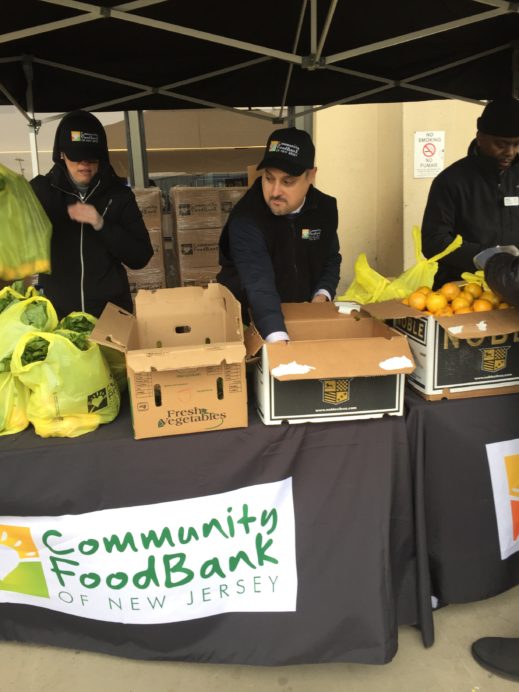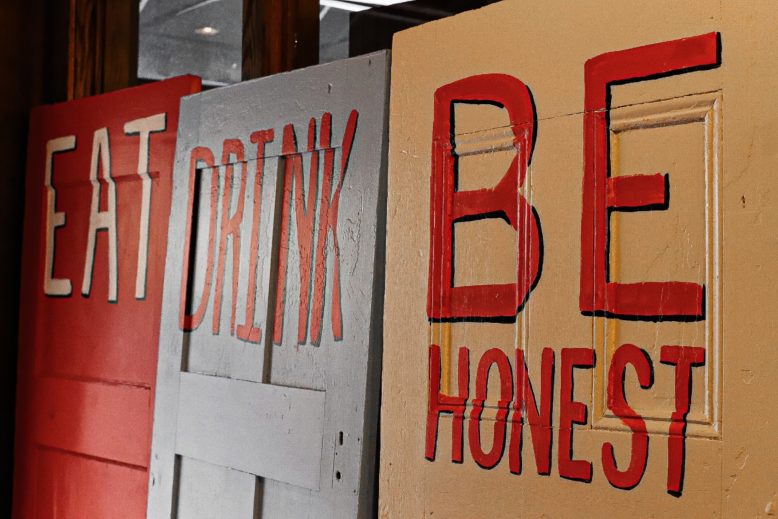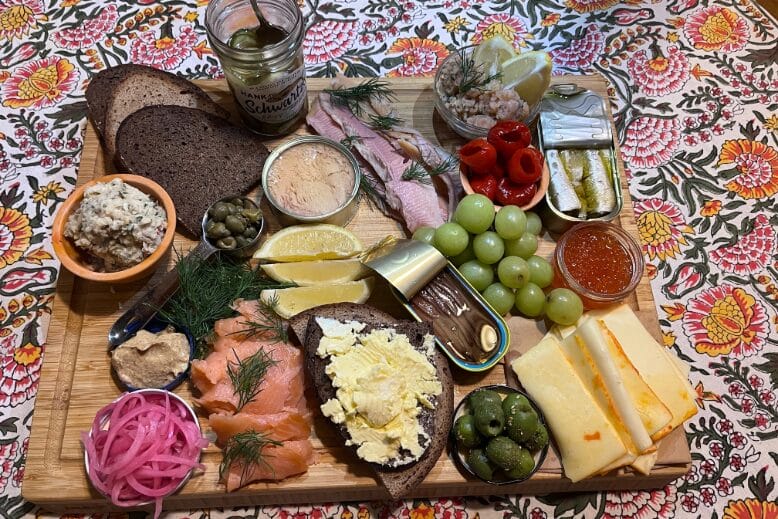
Carlos Rodriguez, president and CEO of the Community FoodBank of New Jersey, works at a recent food drive. Photo courtesy of CFBNJ
You might already be frazzled trying to figure out where to get your own bird for Thanksgiving. But for many families across the state, securing their next meal is an everyday dilemma. Fortunately, and this is really something to be thankful for, there are organizations like the Community FoodBank of New Jersey (CFBNJ), and people like president and CEO Carlos Rodriguez who are running two simultaneous Thanksgiving donation programs to assist New Jersey’s hungry this holiday season.
The first is their 19th Annual Turkey Drive on the November 23 and 24. The second is CFBNJ’s own large-scale turkey distribution project, with thousands of birds being distributed to local area soup kitchens and food pantries at 10 sites “in almost as many counties,” says Rodriguez. The latter began on November 6 and runs through the Monday before Thanksgiving.
Between the two initiatives, CFBNJ—which serve 16 counties, “from the northern tip of Bergen and Sussex all the way down to the light house in Cape May,” says Rodriguez—should reach about 900,000 New Jersey residents this season, including a staggering number of children. We caught up with Rodriguez to ask about the programs, what food scarcity looks like in our state, and what we can do both during, and after, the holiday season to help our neighbors in need. “Hunger is so persistent in New Jersey,” he was quick to clarify. “It’s not just a holiday problem.”
Table Hopping: CFBNJ is doing both a Turkey Drive, as well as 10 staggered large-scale turkey distributions at the same time. Why?
Carlos Rodriguez: It’s the only way to get 25,000 birds across the state! It’s really an opportunity for us to do what we do year-round, but with an extra push.
TH: How would you describe what you do year-round?
CR: Get food product that’s needed and make it available to our local partners, where hunger lives.
TH: I would have to imagine the programs have evolved over the years.
CR: It’s taken different shapes over our 45-year history. Our founder Kathleen Dichiara was doing this out of the back of her station wagon! So it’s gotten logistically complex, especially as the problem of hunger grew and become more persistent. It’s morphed from an emergency need to what families need to just meet their basic necessities.
TH: All told, you donate about 25,000 turkeys. I would assume that’s not all donated by individuals?
CR: No, we have to bring in a number to get distribution going. It’s the only way we can get such volume of food to feed close to 900,000 in need in New Jersey—that includes over a quarter of a million children.
TH: That’s an incredibly high number. And 250,000 children. Has the number of hungry in New Jersey grown?
CR: Food insecurity has impacted about 10 percent of the population of New Jersey for a number of years now. The interesting thing is today the number is persistently high despite low unemployment rates and whatnot. Also it really does speak to the change of who’s hungry in our community. Food insecurity exists in every community throughout the state. It is literally your working neighbor with their children, a retired senior, a veteran that we see and engage with, side by side, on any given day. Today more than half of the people we serve have work income. That’s working families in addition to retirees and veterans. All kinds of people have a hard time making ends meet.
TH: If people want to, though, can they still bring a turkey or Thanksgiving food? Is that still helpful?
CR: Yes, there’s still an opportunity to ask folks to do some shopping on November 23 and 24, to participate in local Thanksgiving drives. We like to create opportunities within the process so people can learn about hunger in our state. It helps us tell the story. It’s unfortunately very real. Too many in New Jersey have to deal with it.

Volunteers during last year’s Turkey Drive. Photo courtesy of CFBNJ
TH: Since they’re not all individually donated, where do the bulk of the turkeys come from?
CR: We buy wholesale using our purchasing power and relationship with food industry. Believe it or not, turkey season starts back in April for us. Of course, we have tremendous food partners and corporate partners, so we leverage that relationship to our full advantage.
TH: I would have to imagine there are some overhead costs, meaning donation—ten bucks, as opposed to a twenty- or thirty-dollar bird—could help just as much?
CR: Oh yeah. There’s truck delivery and fuel cost and driver costs. There’s huge amounts of money! And that dollar really goes a long way at a community food bank, that will support three meals. That can help make our budget goals for turkeys we already committed to and need the funding to get where they’re needed.
TH: Giving a can of cranberry sauce, for example, can feel satisfying, but it sounds like you’re saying a cash donation can have a significant impact?
CR: That dollar or so for that can of product, we can leverage three meals out of that. Not only that, we’re getting food that’s needed at a local pantry, making sure it’s appropriate for community health needs, dietary considerations. We’re not just providing food. We’re providing food that’s going to have an impact on a person’s life.
TH: Are you able to partner with any restaurants or food businesses?
CR: We have tons of partnerships, fewer with restaurants, but more food industry partners. In the coming days, the larger supermarket chains are making scheduled donations, helping us create awareness, raise funds. The success of donations during this time of year really does fuel our ability to provide food year-round. Let’s use that amazing season of giving and awareness to fuel our ability to feed our neighbors throughout the entire year.
TH: Speaking of “the entire year,” what about the idea that’s sometimes mentioned—that we “remember” things like hunger and homelessness during the holidays, during Thanksgiving, mostly, and then forget it again, even during cold and arguably rougher months like January and February? Should we push to keep the spirit alive through Thanksgiving?
CR: Absolutely. In January, after the euphoria is over, there are still families in need. And sometimes even more so as seasonal jobs come to an end.
TH: A lot of us have good intentions but are busy—arguably too busy! Is it too late to find some way to be involved?
CR: If people haven’t made plans yet or are scrambling, of course there are donations and opportunities online. And anything like that helps. You have no idea. Hunger’s a year-round problem. Like we say, there are never any Thanksgiving “leftovers,” just another day of distribution.
The large-scale turkey drop-offs by CFBNJ are pre-arranged between local area food banks, soup kitchens, and media, politicians, etc. But for individuals interested in donating, you can find locations for the Community FoodBank of New Jersey’s Turkey Drive 2019 drop off locations here. They also have a super-useful list of “Most Wanted” food items here. And you can always make a cash donation on the Community Foodbank of New Jersey website any time of the season. Any dollar you donate, says Rodriguez, is like three times as much when they spend it, which means a lot to a hungry kid in Jersey.
By submitting comments you grant permission for all or part of those comments to appear in the print edition of New Jersey Monthly.





